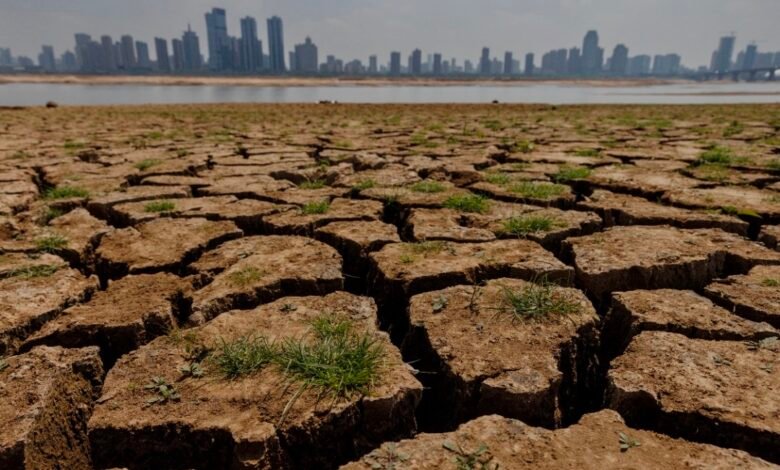Kashmir Faces Drought-Like Conditions, Sparks Concern in South Kashmir’s Anantnag and Kulgam Districts

Srinagar, Feb 17, Kashmir is grappling with a drought-like situation, especially in the southern districts of Kulgam and Anantnag, where residents are expressing deep concern over the unusually dry conditions. Rivers that are usually teeming with water during this season have dried up, leading to anxiety and worry among the local population.
In Anantnag’s Achabal area, historically known for its lush greenery and flowing water, the drought is causing distress among residents. The famous Mughal gardens of Achabal, usually a symbol of nature’s abundance, are now bearing the brunt of what many are calling the wrath of nature.
Similar concerns are echoed in Kulgam, where the Vishw river, once a prominent watercourse, has reduced to little more than dry stones. Locals have expressed regret over their own role in the degradation of the river’s condition, admitting to the practice of dumping household waste, including bathroom water, into the river channels. Many believe these actions have contributed to the alarming state of the rivers.
Ahrbal, another once-flowing river in Kulgam, which never used to dry up even in the harshest seasons, has now completely disappeared. The dry riverbed stands as a reminder of the environmental damage that has taken place over time.
Local residents have pointed out the broader environmental crisis — with forests burning, higher-than-normal temperatures, and a drastic reduction in rainfall and snowfall this winter. Many locals believe these changes are a direct result of human activity and negligence, with rivers and forests increasingly bearing the consequences of pollution and unsustainable practices.
Environmentalists warn that this drought is not just a natural anomaly but a reflection of long-term ecological imbalances caused by neglect. As the region heads into spring, concerns about the long-term impacts on agriculture, water availability, and local ecosystems are growing.
This situation calls for immediate attention and action, with many urging both local communities and authorities to adopt more sustainable practices, restore natural watercourses, and prevent further environmental damage.





